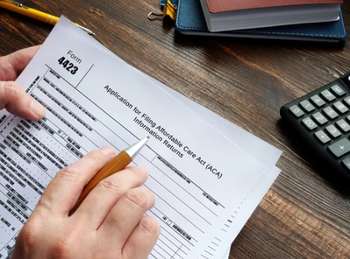
Sacubitril/Valsartan Improves Outcomes in Ischemic, Nonischemic Heart Disease
Using data from the PROVE-HF study, investigators conducted a subanalysis of outcomes among patients receiving sacubitril/valsartan who did and did not have ischemic heart disease.
Sacubitril/valsartan led to improved outcomes among patients who had either ischemic heart disease or nonischemic heart disease as the cause of their
The 794-patient cohort comprised 426 patients who had ischemic heart disease and 368 who had nonischemic disease as the cause of their (HFrEF), defined for this study as a left ventricular ejection fraction (LVEF) of 40% or below, and measureable concentrations of N-terminal pro-B-type natriuretic peptide (NT-proBNP).
Eight indicators of heart function were measured at baseline, day 14 (NT-proBNP only), month 6, and month 12: NT-proBNP, Kansas City Cardiomyopathy Questionaire-23 overall summary score (KCCQ-23 OSS), LVEF, left ventricular end-diastolic volume index (LVEDVi), left ventricular end-systolic volume index (LVESVi), left atrial volume index (LAVi), left ventricular mass index (LVMi), and E/e’ ratio.
Of these indicators, 5 of 8 were higher at baseline among the patients with ischemic disease, excepting LVEF, LAVi, and E/e’ ratio:
- NT-proBNP: 788 ng/mL among those with ischemic heart disease vs 747 ng/mL in the nonischemic cohort (P = .02)
- KCCQ-23 OSS: 65.1 vs 64.8, respectively (P = .09)
- LVEF: 28.3% vs 28.7% (P = .08)
- LVEDVi: 87.4 vs 86.8 mL/m2 (P = .09)
- LVESVi: 61.7 vs 61.6 mL/m2 (P = .04)
- LAVi: 37.7 vs 37.9 mL/m2 (P = .01)
- LVMi: 125.5 vs 122.2 g/m2 (P = .35)
- E/e’ ratio: 11.5 vs 11.7 (P = .11)
By the first follow-up, improvements were seen across the board. NT-proBNP levels fell by 30.8% and 30.1% (P = .45) among the ischemic and nonischemic disease groups, respectively; KCCQ-23 OSS improved by 18.4% and 21.3% (P = .98), respectively; LVEF increased 20.1% and 20.6% (P = .16); LVEDVi was reduced by 8.0% and 9.1% (P = .83); LVESVi was reduced by 14.3% and 16.2% (P = .57); LAVi dropped 12.7% and 13.5% (P = .85); LVMi decreased 3.5% and 9.7% (P = .01); and E/e’ ratio fell by 5.2% and 14.5% (P = .14).
At the 12-month mark, the study investigators saw significant reverse remodeling irrespective of HF pathogenesis, they noted. Again, all measures improved, but 2 stood out, they underscored: There was significant improvement in KCCQ-23 OSS in both patient groups (P = .17). and NT-proBNP was reduced more in patients who had nonischmic HFrEF (P = .06).
“The results of this study are reassuring given prior suggestions that ischemic HFrEF might not be as treatment responsive with other guideline-directed medical therapy (possibly attributable to myocardial scar being intrinsically less likely to reverse remodeling),” the study investigators concluded. “Although fewer benefits from guideline-directed medical therapy may be often seen in those with HFrEF attributable to ischemic heart disease, results from this study provide reassuring evidence for association between sacubitril/valsartan initiation and impact on important mechanistic outcomes regardless of HFrEF pathogenesis.”
They also note that the combination angiotensin receptor neprilysin inhibitor has benefits superior to those seen from enalapril among a similar patient population.
Reference
Mohebi R, Liu Y, Felker GM, et al. Mechanistic Efficacy of sacubitril/valsartan in ischemic versus nonischemic heart failure. J Am Heart Assoc. Published online April 12, 2023. doi:10.1161/JAHA.122.029229
Newsletter
Stay ahead of policy, cost, and value—subscribe to AJMC for expert insights at the intersection of clinical care and health economics.









































